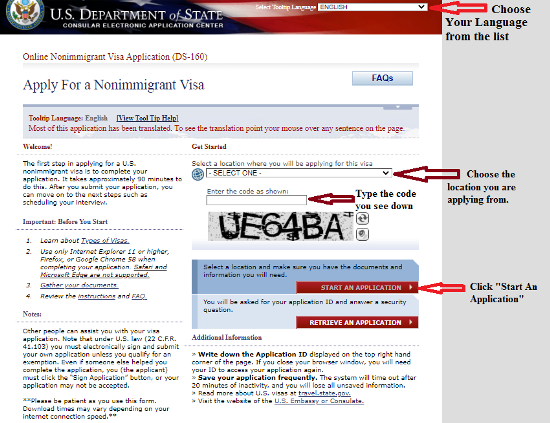Most Common Reason for Visa Denials and How to Avoid This: In this guide, we will learn the most common reason why visa applications to the United States get denied. Those applying for a U.S Visa, make sure you read this guide to the end.
Most Common Reason for U.S Visa Denials and How to Avoid This
Below is one of the most common reasons why visa applications to the United States get denied and tip to avoid it.
For many nonimmigrant visas to the U.S, such as for visitor visas, student visas and even many work visas that are nonimmigrant visas to the U.S, they have a requirement that the applicant for that visa has something called nonimmigrant intent.
What nonimmigrant intent means is that the applicant for that visa intends to return to their home country. They do not intend to remain in the United States permanently.
If an applicant for one of these non-immigrant visas does not satisfy the consular officer at the time of their visa appointment that they have nonimmigrant intent, then that consular officer, that immigration officer at the consulate will likely deny the visa application for something called 214(B).
214(B) essentially means that the visa applicant did not sufficiently convince the immigration officer that they possess nonimmigrant intent.
It could be that the immigration officer is not convinced that the applicant will return to their home country or potentially the immigration officer thinks that the applicant for the particular nonimmigrant visa will be remaining in the United States or something along those lines.
That’s a big picture overview of 214(B). It’s a highly common reason for nonimmigrant visa denials.
You might be wondering, how can I avoid a 214(B) denial?
The answer is that you want to show strong ties to your home country. What are some examples of strong ties to your home country?
Example 1: Is that you own property in your home country.
For example, you own a home or you own an investment property.
Example 2: Is that if you have family in your home country.
For example, if you have a spouse and children in your home country.
Example 3: Is if you have a business in your home country or you have a job in your home country.
In each of these scenarios or with each of these examples, you’re showing a link between yourself and your home country, where it would be unlikely for you to just leave whatever it is that you have going on in your home country and come to the United States permanently.
All of those examples a job, property, family, are things that tie you to your home country that make it less likely that you would give that up or leave that behind and move to the United States.
Again, one of the best ways to avoid a 214(B) denial is to demonstrate strong ties to your home country.
Visitor visas
Visitor visas regularly have denials under 214(B). How can you overcome these denials? Again, one way is to show strong ties to your home country.
In addition to showing strong ties to your home country, you also want to show a definitive purpose for coming to the United States.
What are some examples of a specific purpose for coming to the United States?
For example, if someone was coming to do a medical procedure, or someone was coming to attend a seminar of some kind, or a business conference, or to potentially negotiate a contract, or to go sightseeing. These are all specific reasons for coming to the United States.
The more that you can show the immigration officer that you have all these strong ties to your home country, and on top of that, you have a specific, limited purpose for coming to the United States, something that’s definite in duration or that’s limited in duration.
These two can work together to really create a strong impression before the consular officer that you’re not planning on coming to the United States to remain permanently.
You’re coming for a specific reason, and you certainly are going to return to your home country because of all those strong ties that you have there.
In summary
This guide talked about one of the most common reasons for nonimmigrant visa denials, 214(B) and some ways that can help strengthen your case to avoid denials under 214(B).
I hope you found this guide (Most Common Reason for Visa Denials and How to Avoid This) extremely helpful. Thank you so much for reading it.
If you know anybody that can benefit from this information, please make sure to share this guide with them. We’re all about empowering each other with knowledge.
DISCLAIMER: This post/guide and content is designed for general information only and is NOT legal advice. This site is not offering any legal advice. If you need legal advice, you should seek the advice of an attorney in your jurisdiction before taking any legal action.
The information presented in this post/guide should not be construed to be formal legal advice.
 Jobsscholar Jobs Search | Education Hub | Scholars Portal
Jobsscholar Jobs Search | Education Hub | Scholars Portal
